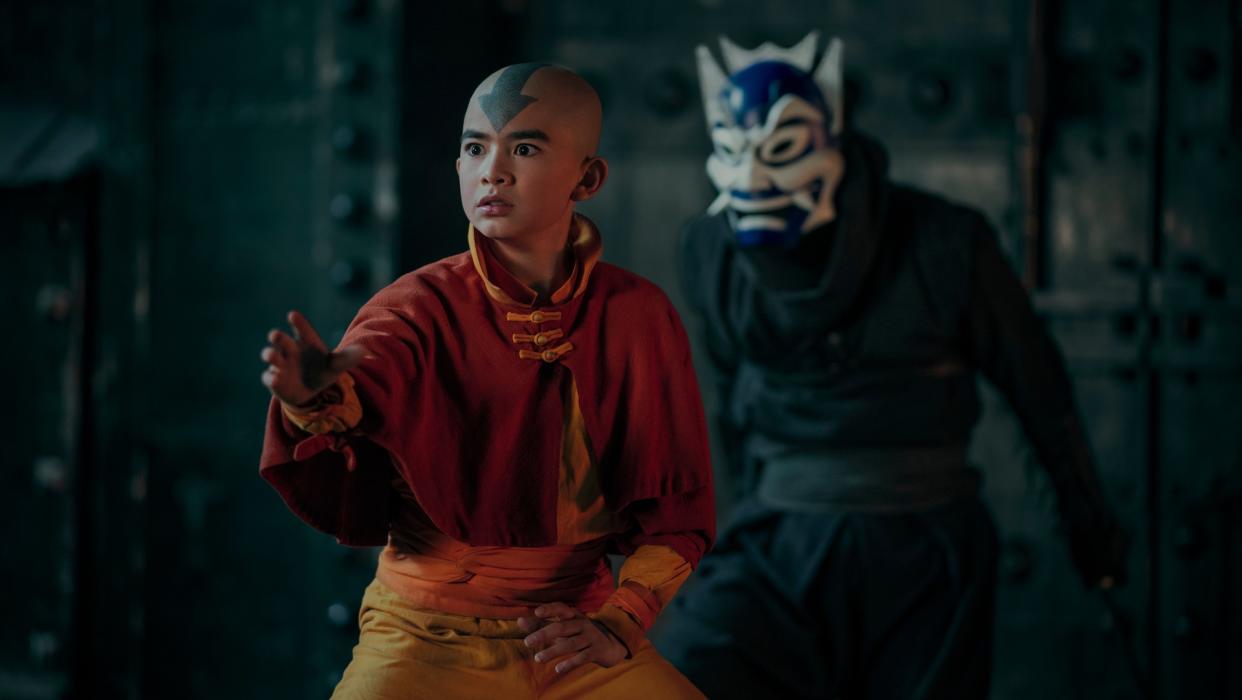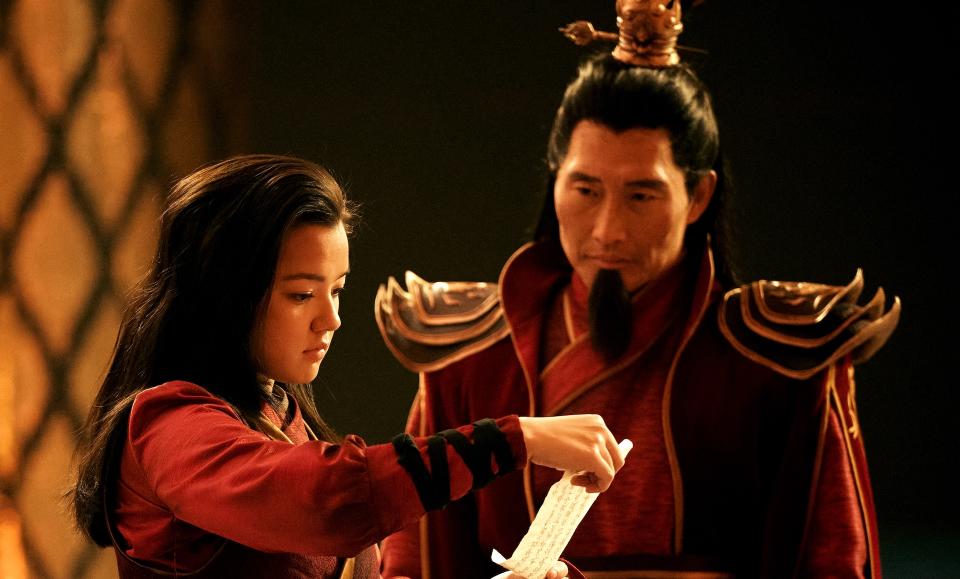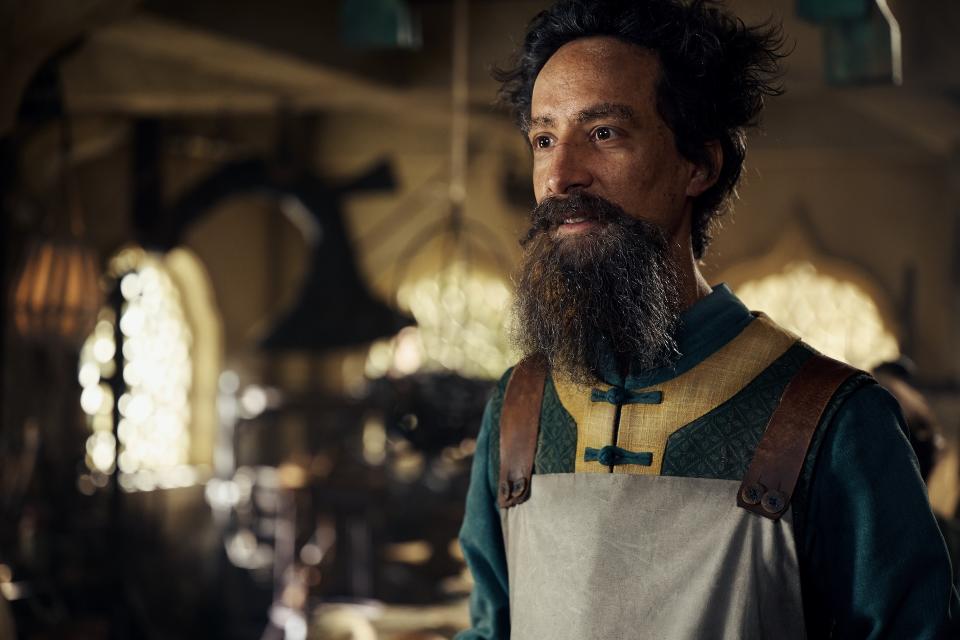‘Avatar: The Last Airbender’ Boss on Adapting Beloved Anime: ‘It Was a Balancing Act’

Albert Kim needs you to know that he is an “Avatar: The Last Airbender” superfan.
The writer and executive producer of Netflix’s live-action retelling of the Nickelodeon cartoon took on the role of showrunner after creators Michael Dante DiMartino and Bryan Konietzko exited the series — but he was already part of the writers room and a longtime “Avatar” fan before that.
More from IndieWire
“I did work with [DiMartino and Konietzko] for a short period, and we overlapped while we were here and I got along great with them,” Kim told IndieWire ahead of “Avatar”s February 22 premiere. “I was excited just as a fan to be able to dig in and ask my own nerdy fan questions about Zuko’s mom and who Aang’s parents might be, and all the fun stuff fans like to talk about.”
Since diving into and immersing himself in all things “Avatar,” Kim may have unlocked a new level of fandom. During a 30-minute chat with IndieWire, he references details both in the animated series and in his own version, specific musical pieces, and the number of rings at the Pohuai Stronghold. But when it came to turning the adventure-of-the-week cartoon into an eight-episode drama, he knew he had to look at the story differently.
“The first thing I did was layout all 20 episodes of the original series on a big whiteboard, and then took a step back and looked at the whole arc and said, ‘What are the elements that can go together? Where the narrative through lines that connect?'” Kim said. “When you take a look at the overall arc, you realize there are certain things that go together just naturally, thematically. You have a character like Jet (Sebastian Amoruso) who is someone who’s pushed to an extreme place because of the war, and then you have a character like the mechanist (Danny Pudi), who is also someone who has been pushed to an extreme place because of the war. They both have good intentions, but they find themselves on opposite sides of the line. In the original, those stories take place in completely different locations, so we thought what if we bring them together? That felt like a natural way to create a thematic throughline.”
That also meant making sacrifices, whether it was because of new story directions (the break in to Avatar Roku’s temple) or for practical reasons like scale and budget. The writers room was a mix of diehard fans and the uninitiated, as was the set (there may have been some “Avatar” tattoos), to create accountability for which story points were essential and which could be repurposed.
“It was more a matter of getting the right ratio — mixing and matching the familiar elements with the new elements, whether or not something felt true to the spirit of the original,” Kim said. “That allowed us to explore new stories, which is also hopefully what fans will expect. They want to see all the familiar stuff, but they also want to be surprised. You don’t want to do a direct one-to-one translation. You want to be able to say this is a fresh story in its own right.”
This interview has been edited for length and clarity.
IndieWire: The show really feels like it’s made for fans. How important was it to you to hit that but also make it accessible to newcomers?
Albert Kim: Well, that’s the whole game, isn’t it? It’s about making sure that millions of diehard fans aren’t disappointed, while also being appealing to a whole generation of new viewers who know nothing about the original — and that was a tough tightrope to walk. Every step of the way we just tried to remind ourselves that we can’t get too caught up in our own cleverness, and had to remember there are some people who don’t know who any of these characters are or what the bending is or what this world is, and we had to make sure that everything felt accessible to them.
At the same time, we knew there were plenty of people who had very specific things they wanted to see from the show, so we tried to make sure we worked in as many of those as we could. It was a balancing act. Luckily, it wasn’t necessarily exclusive. It wasn’t like including a great action scene involving Aang (Gordon Cormier) and Bumi (Utkarsh Ambudkar) precludes new viewers from getting into it. So the main thing with the diehard fans is making sure that they’re aware this is a new version of the story. As familiar as it might seem, we are telling our version of “Avatar: The Last Airbender,” so things will change, things will feel different, but hopefully in a way that also feels familiar. One of the things we told ourselves throughout production is it should be fresh, but familiar.
I would love to know more about the decision to move up some of this season 2 stuff, not only Ozai (Daniel Dae Kim) and Azula (Elizabeth Yu) but even some of the Omashu stuff.
It was all part of that same process of looking at the entire arc thematically and seeing what worked best. At certain points we found there were certain elements from later seasons that worked really well in our story. We had the benefit of hindsight; we could look back at a completed series, the three seasons of the original series and knew what was to come and what was going to happen there. So we were allowed to pick and choose a little bit without hopefully disrupting too much of the future seasons. The decision, for instance, to have more Azula and Ozai in the first season, that felt natural to me because I wanted to be able to balance out the story a little bit and show more of the Fire Nation than they did in the original. They are the antagonists so you want to know more about them, we want to know more about what went into Zuko’s (Dallas Liu) makeup and psychology and why he is the way he is, as well as tee up Azula and Ozai a little more for the subsequent seasons. Those felt very natural to me; again, I’m sure some fans are gonna have an issue with that, but I’m comfortable with those decisions. Again, there’s also practical reasons; The Fire Nation storyline gave us standing sets and locations we could cut to, whereas we’re going from different locations with our heroes every episode, so it provided storytelling balance in that sense too.

And then what was particularly exciting or daunting when you got to actually filming and being on set? It sounds like the visual effects and the budget was a big looming factor.
There are things you can do in animation that prove extremely difficult to do from a practical and financial reasons in live action. A sequence like the escape from Pohuai in the animation, which is incredibly epic sequence, is a very challenging one to do live action. We knew we wanted to do it because it was such a memorable thing, but we had to cut some corners here and there. I’m sure diehard fans will notice that our version of the Pohuai Stronghold only has two rings as opposed to three — that was cost savings thing. Hopefully it didn’t affect that sequence or the storyline that much. There were little corners we had to cut here and there to make those things work. It’s about being able to do something in live action that may be a little easier when it comes down to just illustrating.
Who’s your favorite character to watch or to write for — or both?
Oh, that’s always hard to answer because they all feel like my babies. They’re each great in their own way. Who doesn’t like Sokka (Ian Ousley) and his sense of humor? It’s so much fun to write for that. Or Aang and his optimism and childlike sense of hope? It’s incredibly refreshing to be able to write a character like that, and dare I say it’s something that’s needed in this day and age, so that was great. Katara (Kiawentiio) is probably the most emotional of the characters, so that’s catnip for writers. I would argue Zuko is probably the most popular character from the original series because of his incredible redemption arc; I think one of my favorite episodes of our series is all centered around Zuko; the sixth episode may be my favorite of the whole season.
I was really struck by how much Aang really seems like a little kid in this version. Was that conscious or just a byproduct of casting Gordon?
One of the things I’ve talked a lot about as being authentic in the show. That means being culturally authentic, being authentic to the original series, and also being age authentic. Aang is 12-year-old, and I wanted to make sure we cast a 12-year-old — actually Gordon was 11 when we cast him but he became 12, we had his birthday on set — and same with Katara being 15 and Zuko and Sokka as well. I didn’t want to cast a 25-year-old to play a 15-year-old. I know that’s a convention that happens in Hollywood, but that didn’t feel right to me because the journey of these characters is the journey of a bunch of kids, and it’s their outlook as kids that ends up changing the world. So it was very important for me to cast age-appropriately. I think fans will be surprised because it’s one thing to see a 12-year-old as a cartoon as another to see a real life 12-year-old, but I think it’s right for the story and hopefully people will will accept that.
It was very hard to watch him cry! He’s baby.
It makes you automatically feel for him when he’s a live-action 12-year-old kid — not that the original cartoon didn’t either, but there is more immediacy to seeing a live person going through those emotions, especially when they’re a child.
As a fan of the original, do you participate in shipping? I can’t help noticing certain choices in this show… Cave of Two Lovers, no Aang? Interesting…
I know better than to get into that debate. There’s no winning if I start talking about which ships I’m into. Fortunately for me, that becomes a tomorrow or later-season problem as you get into the original series and where those actually start to develop. It’s not something we had to address a whole lot in the first season. There were choices — like you said, with the cave of two lovers, but that was less about any kind of future romance or relationship and more about thematically what worked best for that story. That was a time in our season season where Katara and Sokka were in conflict, and it felt like the right move to have them go through the tunnels and be hit with the message of “Love is brightest in the dark.” It was less about shying away from any potential romance or relationship and more about what felt right for that story at that moment.

Having now filmed and watched it, what is something that has really struck you to see now on live action?
Seeing the final VFX go in and witnessing the epic nature of the story has been incredible, because even knowing what’s to come and having been there while we shot those scenes, it’s still not until you can see it on the screen with all of the VFX in place that you realize the emotional impact of certain scenes. Aside from that, it’s actually seeing the performances of these actors. Having been there on the day in production and seeing them is one thing, but then seeing them on the screen as an episode cut together, it’s just so much more moving. The ending of 106 I’ve watched so many times I’ve lost count, but it still brings a tear to my eye every single time. That’s something that I never get tired of.
Paul’s (Sun-Hyung Lee) performance during the episode with the funeral of his son is another scene that brings a tear to my eye every single time. As great as the original was, it didn’t have that kind of impact on me back then. I mean, “Leaves From the Vine” can make me misty every single time I hear it, but seeing Paul do that scene at his son’s funeral was just shattering.
The finale ends with Zuko recognizing that he has been manipulated by his family, and the comet coming back. Because of those back-to-back scenes, I feel like they’re positioned as equal conflicts, which is another significant change.
The comet was an interesting element in the original because it provided a ticking clock for the story. Aang and the others knew that they had to complete their mission before the comet returned. We didn’t have that available to us for a very practical reason which is that we didn’t know how long it would be before we can shoot a Season 2 or 3. However, I always knew that the looming threat of the comet had to be there, so we added it as that very end scene, to show that we were aware the threat is out there. It’s coming. And as it so happens, it ends up capping Zuko’s arc for the first season as well. That’s what creates that parallel that you’re talking about. That’s another thing that we had to consider in making the transition from an animated show to a live action is how do we account for the time span of the story? In the original series, pretty much all three seasons took place within the span of a calendar year. That was not something we’d ever be able to do, and it’s not something we can even try to do because human actors actually age and grow older and change. We had to account for that going into the first season.
It bookends Zuko’s arc but then you also have the very clear parallel of the comet in the beginning in the comet at the end, which I thought was a nice touch.
We wanted to do that bookend — to your point, new viewers might not even recognize what that is, probably won’t. But there’s that bookend there both for the fans of the show, but also if you go back and rewatch it you’ll see it begins and ends with the comet. Another way we bookended the series is the opening episode highlights Firelord Sozin’s (Hiro Kanagawa) strategy of misdirection and how he used that to attack the Air Nomads; and at the very end you see Firelord Ozai use the exact same tactic and reveal that he used the misdirection to conquer Omashu.
I’m still so curious how people who don’t know this world at all are going to respond. How would you pitch this show to someone who knows nothing about “Avatar,” who is just opening up their Netflix on February 22?
I would say that “Avatar” is this epic fantasy about a group of kids who set out to bring hope back to a world that’s in desperate need of it. Along the way they become a family, and bring that sensibility to everyone they meet on their journey. At heart, that’s what it is to me emotionally. On top of that, there is epic action and adventure with fantastical creatures, incredible environments, and bending effects that will blow you away.
They will airbend you away! Sorry. It sounds like you’re bracing yourself for some criticism, but what would you say to fans after they’ve watched these eight episodes, knowing that Season 2 or 3 may or may not be on the horizon?
I hope that they recognized and felt the love that we all had behind the scenes for the show and the story and the characters. We, like them, approached it as fans first and foremost, and respected what they expected from the show, and hopefully delivered on that. It sounds a little obvious, but I get the impression some people actually question our fandom level of the show itself, so I hope that comes through.
“Avatar: The Last Airbender” is now streaming on Netflix.
Best of IndieWire
Christopher Nolan Movies, Ranked from 'The Dark Knight' and 'Tenet' to 'Dunkirk' and 'Oppenheimer'
Where to Watch This Week's New Movies, Including 'Argylle' and 'How to Have Sex'
Christopher Nolan's Favorite Movies: 40 Films the Director Wants You to See
Sign up for Indiewire's Newsletter. For the latest news, follow us on Facebook, Twitter, and Instagram.

 Yahoo News
Yahoo News 
